Real-time capabilities, inspection systems fine-tune coiled tubing
Fracturing of horizontal wells drives CT activity in North America; getting weight on bit, friction lock-up still challenges in CT drilling
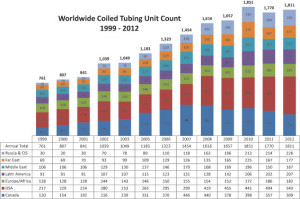
By Joanne Liou, associate editor
Improvements in coiled-tubing (CT) data acquisition are sharpening the eyes and ears of downhole operations, as real-time data allows operators to better monitor operations from stimulation to drilling and conveyance. The versatile tubular continues to expand an already-significant presence in well servicing and completions, and gyro-steering technology has opened opportunities to drilling applications in directional and horizontal wells.
“Getting weight on bit and avoiding friction lock-up, as coiled-tubing drilling and milling reaches farther, especially in horizontal wells, is the biggest challenge,” Brian Schwanitz, International Coiled Tubing Association (ICoTA) senior co-chairman and Welltec vice president, said. “Being able to pump enough circulation rate to remove the cuttings back to surface is another challenge, as with any drilling operation, and seems to be more so with coiled-tubing drilling.”
A 2012 report on the worldwide coiled-tubing unit count from ICoTA reflects an overall year-over-year increase in coiled-tubing units over the past decade, especially in the US. “The increase was on a pretty steep growth rate for several years, but it seems to have slowed down partly because it has grown into most of the major markets,” Mr Schwanitz said.
In North America, CT is being used in most horizontal wells to mill frac plugs or clean up after the stimulations, Mr Schwanitz explained. “The proppant that was left in the well after the frac jobs has to have fluids circulated through the coiled tubing in order to clean it out. The boom in multistage fracking of horizontal oil shale wells is why there is so much CT activity in the North America market.”
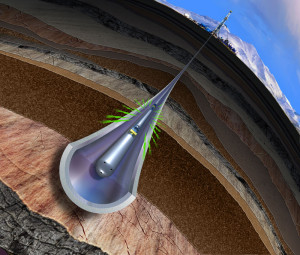
Downhole developments
Over the past seven to eight years, a significant portion of Schlumberger research, engineering and development funds has been invested in real-time downhole measurements, which includes the ACTive in-well live performance family of downhole CT measurements and services, Teoman Altinkopru, vice president, Schlumberger, well intervention, marketing & technology, said. The CT services enable operators to run wireline production logging tools on CT in real time. Since its commercialization in 2008, the ACTive family of services has been deployed globally.
Until the introduction of the ACTive PS integrated CT production services in 2010, the telemetry system installed inside the CT was not compatible with the fluids pumped following the production logging job, which made two sets of CT reels necessary – one for production logging and a second for treatment. With ACTive, a telemetry system has been developed that is compatible with all fluids pumped through CT for treatments. “We go to our customers’ wellsite with only one set of equipment that would allow us to do the logging, as well as the treatment,” Mr Altinkopru said.
The ACTive telemetry system runs the length of the CT with distributed temperature sensing (DTS), which helps to find sections in a carbonate reservoir where hydrochloric acid should be pumped. With DTS, “we see clearly where the majority fluids have gone into, and we pull our CT back to that depth and set a temporary high-viscosity treatment fluid that will reduce intake for that particular zone, hence giving opportunity to neighboring zones to take the remainder of the treatment fluid,” Mr Altinkopru explained. “The ultimate objective of the customer is to treat the productive zones with best efficiency to optimize treatment of that zone.”
In Kuwait in Q4 2012, Schlumberger Well Intervention Services performed the first ACTive in-well live performance in conjunction with DTS and the ABRASIJET hydraulic pipe-cutting and perforating service on an open-hole horizontal well in the tight Mauddud limestone reservoir for Kuwait Oil Company. Based on the interpretation of the DTS temperature profile, the ABRASIJET technology successfully jetted across the damaged zones to create slots, bypassing wellbore damage, leading to increased reservoir contact and ultimately boosting incremental oil production, according to a Schlumberger report.
In the Burgan field in Kuwait, which had been drilled and completed in 1994 but not placed on production, the service was deployed with DTS on a stimulation operation in a Kuwait Oil well. Based on interpretation of temperature profiles obtained from DTS and open-hole logs, the pumping schedule was adjusted and fluid placement was optimized across the open-hole section targeting the potential oil zones, the Schlumberger report stated. Achieving uniform stimulation of the tight reservoir section, the well is now producing oil at 600 bbl/day.

Increasing CT efficiency
Manufacturing technology has improved features of mud motors that also have enhanced CT performance. Even-wall technology, which limits the amount of rubber that needs to be used in the manufacturing process, yields rubber with a uniform thickness elastomer. “The new elastomers bring us to higher temperatures and better endurance,” which translates to more production and stability, Mike Rossing, global business unit manager for thru-tubing at Weatherford, said. The new elastomer allows for stronger power sections to reduce milling times, which provides operators additional confidence to take on more intervention using CT as a conveyance method, he added.
Further improvements in rubber, such as Weatherford’s ForceFlex Technology, have cut costs associated with the manufacturing process of mud motors. The company believes that the use of proprietary compounds and processes during manufacturing has yielded the same high-pressure seal lines with better reliability.
To keep up with long horizontal sections, friction reduction tools are being used to help reduce helical buckling and the lockup of CT. “Through the use of fluid pulses, the friction reduction tool frees that friction and enables the CT to reach deeper into horizontal wells,” Mr Rossing said. Weatherford field-tested its tool in September and October 2012 in the Marcellus and Eagle Ford shales. Although the field trial in the Marcellus was successful, the tool did not meet all expectations in the Eagle Ford.
“We weren’t using as much of the hydraulic power that was available to us, and we’ve gone in and redesigned based around the hydraulic horsepower that is available on the field level to optimize the performance and the reach that these tools can provide,” Mr Rossing explained. Another round of field trials is expected in May. The new version will make better use of the hydraulic energy that is available in the dry fluid, he noted.
Monitoring CT integrity
The reliability of the CT pipe has evolved through materials, handling and storage; however, it remains a weak link in the CT service chain. “The CT pipe itself is made to be spooled on a drum, straightened and then deployed in a well under pressure and high temperature. We pump a lot of abrasive and corrosive fluids through the CT; it is exposed to H2S, CO2 and other metal-unfriendly compounds downhole,” Mr Altinkopru explained.
“If you have a piece of metal and if you didn’t have proper hand tools to cut it in half, you would bend it and straighten it until it is fatigued such that it would break. That’s what we do intentionally to CT pipe. We continuously induce fatigue to the metal.”
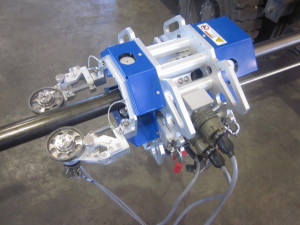
To monitor pipe integrity and mitigate CT failure, companies are deploying CT pipe inspection systems that remain active throughout operations. The Schlumberger CoilScan real-time CT pipe inspection system, which launched in December 2012, uses a magnetic flux leakage (MFL) system that measures the CT’s mechanical and physical properties while running into the well, coming out of the well and during the job. The device detects pipe defects by measuring the MFL leakage, wall thickness, ovality, length and speed of coiled tubing. “It is small enough for our crew to rig it up on a standard CT unit,” Mr Altinkopru said.
The device, which stays at surface and is the last component put on the CT, feeds real-time data to surface acquisition and simulation software, where it is interpreted by 3D-modeling software during real-time operations. The MFL system provides metal detection without making physical contact with the pipe. Field-testing has been completed offshore and onshore in the Middle East and Alaska, Mr Altinkopru said.
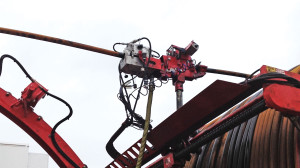
Protecting and prolonging the life of the CT also is at center for Weatherford’s recently deployed Argus Pipe Inspection System. The inspection tool complements current fatigue modeling, according to Mark Ziegler, technical services manager for the company’s global operations group. “When we wanted to move toward larger-diameter CT, anything 2 in. in outer diameter and greater, we felt that an additional engineering strategy should be put in place because of certain deficiencies that exist in fatigue models for the larger-diameter postings, and that strategy was to incorporate full-body tubular inspection tools into that overall engineering process to monitor and track the overall life of the CT string.”
The technology for the Argus system has been deployed in other drilling and stationary applications but only recently has been applied to two-piece mobile CT units in the US. The system, which was launched for CT in December 2012, sits at surface and uses sound waves at surface as pipe passes through it to provide a report, measuring sound as it bounces off the wall of the tubing to record thickness, Mr Ziegler said. The system is currently in use in the Eagle Ford, and Weatherford is planning deployment to markets in Latin America later this year.
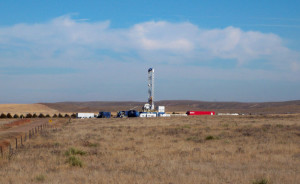
Coiled-tubing drilling
Some of the same benefits experienced in coiled-tubing well intervention and completion techniques also apply to coiled-tubing drilling (CTD). CTD was first utilized in the early 1990s and was used to re-enter existing wellbores to increase recovery from mature fields. “In Alaska, for example, with conventional technology, rigs cannot move easily, and it is harder to drill underbalanced. These are things that coiled tubing can potentially do with a smaller footprint and smaller rig,” Toni Miszewski, founder and managing director of AnTech, said.
“According to BP, they estimate that recovery rates in Prudhoe Bay are now over 60%, compared to their original estimate of 40%, through the use of new technologies. We know that CTD is one of those technologies, and that it is playing a major role,” he added.
A common application for CTD continues to be re-entry drilling. However, new technology is expanding CTD to drill new directional and horizontal wells. In 2012, AnTech completed a five-well drilling program in the Niobrara formation along the Colorado-Kansas border using a gyro-steered BHA, known as POLARIS, which is suitable for drilling directional, S-curve and horizontal wells in shallow reservoirs. By deploying the directional BHA on CT, AnTech believes it was able to drill the wells with minimum environmental impact due to the small footprint, low profile, greater well spacing and lower pipe handling noise.
“You can now do horizontal and directional wells with larger hole sizes using hybrid rigs, which opens up the opportunity for coalbed methane, shallow gas wells that may need to be drilled underbalanced, oil shales and gas shales,” Mr Miszewski said. Wireline telemetry also enables underbalanced drilling with POLARIS.
In a drilling project due to commence later this year, an operator in the US is in discussions with AnTech to deliver directional drilling services in over-pressurized gas wells. Because CTD is capable of drilling underbalanced, it reduces the risk of plugging fractures when drilling with mud in overbalanced conditions and eliminates the risks associated with hitting over-pressurized pockets within the formation, Paul McCutchion, marketing manager for AnTech, told Drilling Contractor.
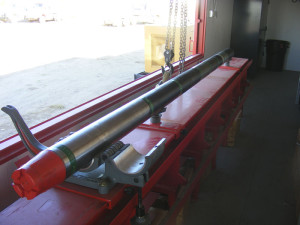
AnTech also is investigating an opportunity to work with an operator in Europe to provide directional drilling with CTD for re-entry work on depleted wells in a national park. “The location and type of wells provide a particularly compelling argument for the use of CTD, as the drilling needs to be carried out underbalanced with minimal impact on the environment,” Mr McCutchion stated. Because of the location, accessing the drilling site is a challenge, and the cost of setting up a conventional drilling operation would be high. “The compact and accessible nature of CTD makes it the ideal method, delivering a quicker and more cost-effective solution,” he added.
Overall, well servicing continues to dominate the CT market, although drilling with CT can be cost-effective in certain applications. “The market for coil itself – across the range of different services – has improved, so the pool of experienced, knowledgeable people who work for CT equipment suppliers provide a very strong base from which to push forward,” Mr Miszewski said.
As industry continues to push its limits into greater depths, CT faces the challenge to reach those depths. “The limit to CT today is about 22,000 ft to 23,000 ft total well depth. CT is going to have to come up with the technology to work on those wells, especially offshore wells that are going in excess of 30,000 ft,” Mr Schwanitz of ICoTA said. “It will require a step-change in technologies, something innovative in materials and techniques.”
ACTive, ABRASIJET and CoilScan are marks of Schlumberger. POLARIS is a trademark of AnTech.




